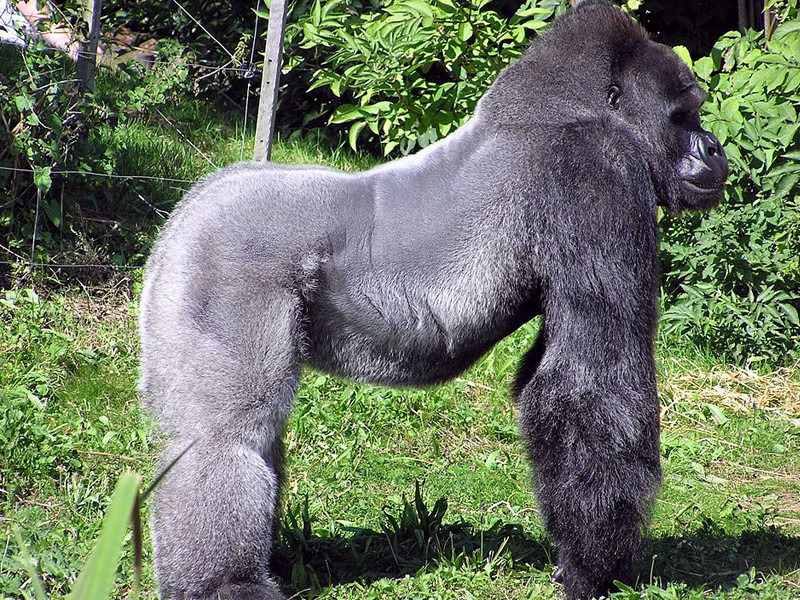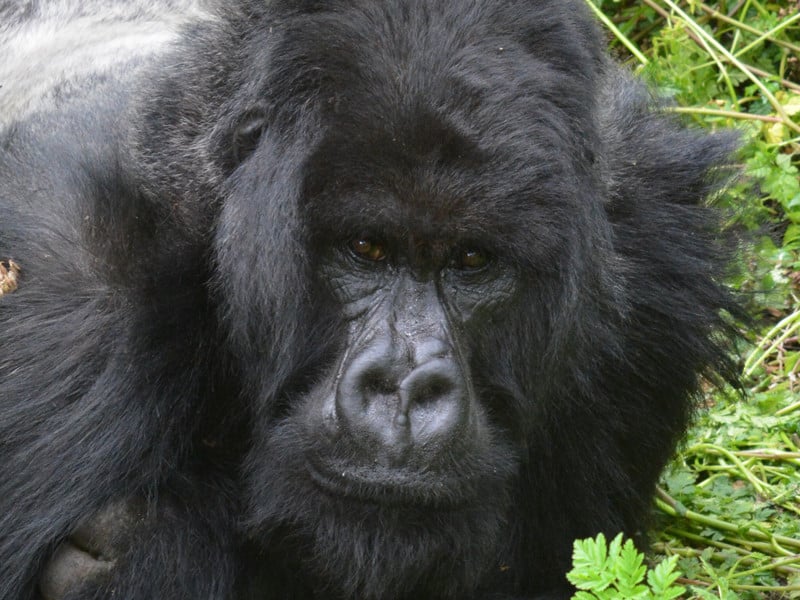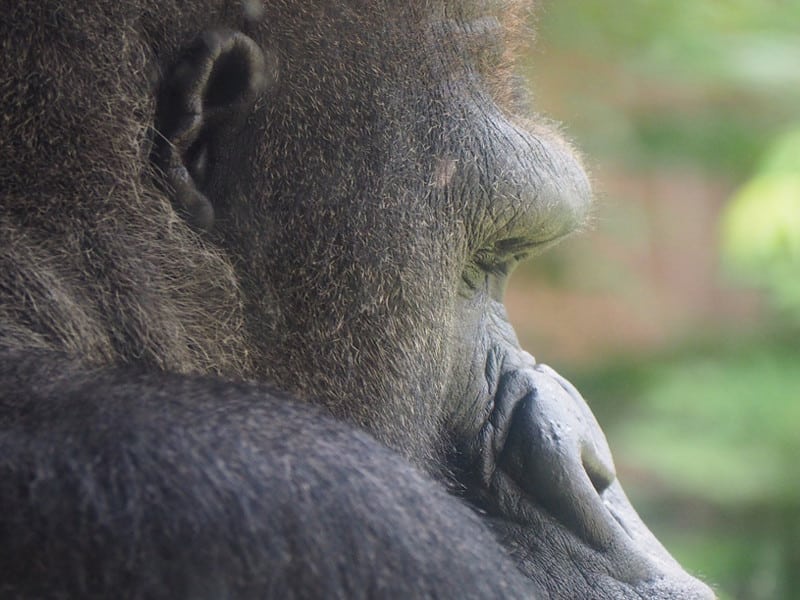The Gorilla is one of the largest apes (or animals) in the world. Because of the similarities in their genetic makeup, they are usually regarded as humans’ nearest cousins. Gorillas, however, have faced threats of extinction which arises majorly from the activities of humans around them. Therefore, there have been increased efforts to enlighten people about Gorillas and their importance to the natural ecosystem.
One of the vital details about Gorillas that we need to understand is the types of gorillas we have, and this is the focus of this article. You will learn about the different species of gorillas, their discerning factors and features, and many other details.
Different Types of Gorillas
Defining the types of Gorillas we have is a bit tricky. This is because there are two species of Gorillas, namely the eastern and western Gorillas. Each of these species has two subspecies under them, which means that the total classification is four.
Therefore, you may find some resources stating that there are two classifications while others claim that there are four types of gorillas.
The first and major distinctive feature between the eastern and western gorillas is their habitat and locations where they are mostly found. This factor is also the key to naming the different species of gorillas. As the name suggests, the eastern gorillas are found in the eastern parts of the African continent which mainly includes the DRC Congo, some parts of Uganda, and Rwanda.
On the other hand, the western gorillas are found in the western region of Africa in countries such as Cameroon and some parts of Nigeria.
Eastern Gorilla
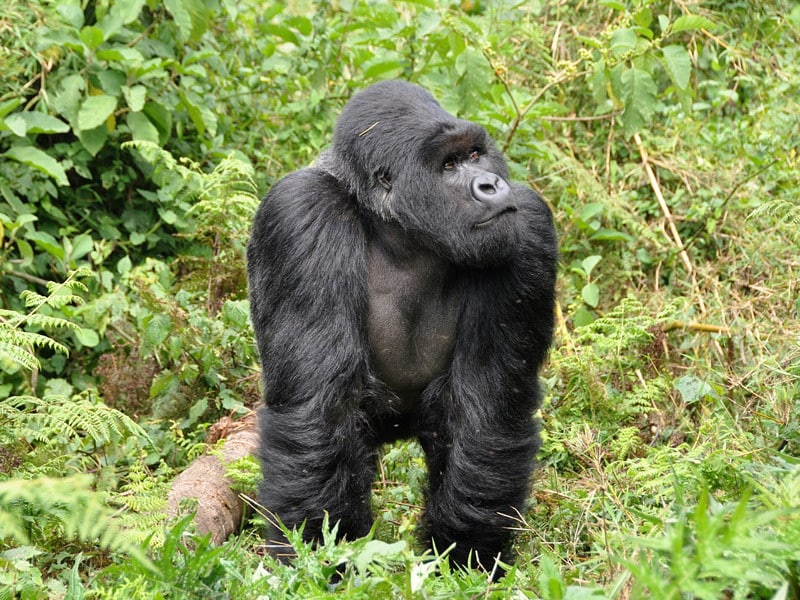
The eastern gorillas are subdivided into Eastern lowland gorillas and Mountain Gorillas. Eastern Lowland Gorillas which go by the scientific name, Gorilla beringei graueri are largely found in the forests and game reserves in the DRC Congo. With a population of less than 3000, the gorilla species is considered endangered and there are efforts by international bodies to help prevent the extinction of the species of gorillas.
This gorilla subspecies has the biggest and most intimidating size of all gorillas. The males are usually bigger and taller than the females and they usually have a strong skeleton accompanied by a huge skull, which is bigger in proportion to the rest of the body. Their arms are also long and strong, and they are quadrupedal, meaning that they walk on their knuckles with their body frame supported by their arms.
They are also known as Grauer Gorillas, in honor of Rudolf Grauer, who discovered the subspecies sometime in the early 20th century. As you may infer from the name, eastern lowland gorillas live mainly in lowland forests and marshlands. However, you may also find them on mountainous tropical forests, as long as these forests are densely vegetated.
Dense vegetation is important to eastern lowland gorillas because their diet is herbivorous, as with other species and subspecies of gorillas.
The second subspecies under the Eastern Gorilla classification is the Mountain Gorilla. These subspecies, as the name suggests, live mainly on mountains and high-altitude sites. Its scientific name is Gorilla beringei beringei. The ‘beringei’ in the scientific name belongs to Captain Robert von Beringe Freidrich, who was reported to have shot two mountain gorillas in 1902.
Its population is around 750 which means that it ranks higher on the scale of critically endangered gorillas.
Because of the particular habitat of these gorilla subspecies (mountains) their body is a bit different from that of the eastern lowland gorillas. The difference is in the thickness of the skin and the fur covering the skin. The mountain gorilla has much thicker skin with a denser and longer fur. The combination of these physical features protects the mountain gorilla against the cold temperature prevalent in mountainous areas. However, in an interesting turn of features, you will find that the mountain gorilla has shorter hairs on its back, and its hand, face, ear, and feet are without hair.
The mountain gorilla also shares the same feeding pattern with the other subspecies of gorillas. They are herbivores and can feed on as many as 142 different types of plants. However, these gorilla subspecies only feed on three types of fruits, and this is because of the low presence of fruit-bearing plants in their habitat.
Western Gorilla
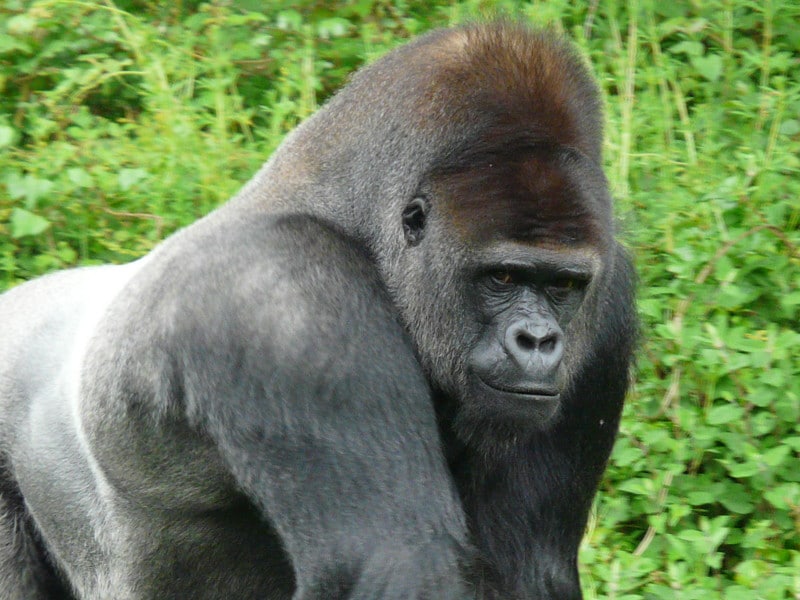
The Western gorillas, on the other hand, are also divided into two subspecies, which include the western lowland gorillas and the Cross River gorillas. The western lowland gorilla with the scientific name gorilla gorilla gorilla is the most popular and populous gorilla species. This species is the one you are most likely to find in a zoo.
These subspecies are usually found in parts of West Africa and some parts of Central Africa. These countries include Cameroon, Angola, Central Africa Republic, Gabon, and Equatorial Guinea. Originally, the habitat of the western lowland gorilla stretches from the Eastern parts of Africa to the west of the Congo basin.
As with the eastern lowland gorillas, this class of gorillas favors lowlands with dense vegetation. This includes marshlands, swampy forests, and riparian forests, as long as there is enough rainfall, humidity, and vegetation.
As a result of the lowland habitat, the western lowland gorilla feeds more on plants and fruits like other gorillas. They can eat as many as 100 different types of plants and fruits. Unlike the mountain gorillas, they eat more fruits, especially in the fruit season.
The second subspecies under the Western gorilla classification is the Cross River Gorilla. This subspecies is the most threatened and endangered species of all gorillas. The first record of this gorilla species was made in 1904 when the scientific name, Gorilla Delhi, was coined for it.
As expected the species has a small population and moves in small groups. You are most likely to find them in a region between Cameroon and Nigeria. These regions include the Afi Mountains and Cross River National Park in Nigeria, and the Mbe Mountains and the Takamanda National Park, both in Cameroon.
This species shares the same feeding habit with other gorillas and feeds mainly on plants and fruits.
Gorilla Sub-Species
-
Mountain Gorilla
The mountain gorilla is one of the world’s most endangered primates. Estimations indicate that there are only about 300 mature individuals left in the wild.
-
Eastern Lowland Gorilla
This subspecies, the biggest of all primates in the world, inhabits mountain tropical forests and lowland tropical forests.
-
Western Lowland Gorilla
The western lowland gorilla is the smallest subspecies, but the body of both genders is robust and powerful. Interesting facts about Gorilla gorilla gorilla.
-
Cross River Gorilla
Is the most threatened of all subspecies by habitat loss, poaching and loss of genetic diversity. Characteristics of Gorilla gorilla diehli or Cross River gorilla.
Sources:
https://www.endangeredspeciesinternational.org/gorillas2.html

